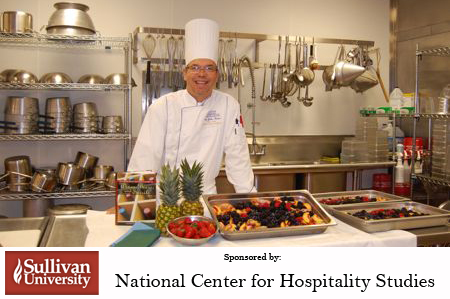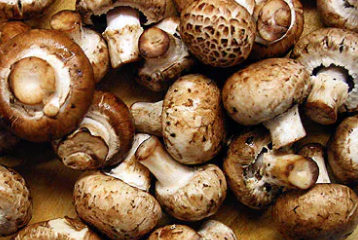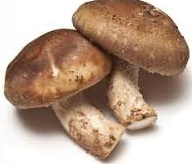The dichotomy of mushrooms always presents an appealing dilemma to me. On the one hand, you have the reverential tones of the aficionados who adore the umami properties of the fungi. On the other, you have the person who innately fears the unknown quality of the plant and manifests that suspicion in their distaste for the texture and flavor of all but the tamest examples.
How as a chef do you reconcile these groups to at the very least, present a dish?

I approach my solution in a variety of ways, and with different but familiar techniques. I stay away from the conventional preparations like breaded and deep-fried, I’ve done those enough as a young cook in the go-go 80’s.
I detest the stuffed mushroom, mostly because the mushroom itself should be more than just a shell for the stuffing. Would you take a scallop, hollow it out and stuff it, with little regard for how ill-used the scallop was?
It doesn’t help that most people’s idea of a mushroom is the pallid variety known as the button mushroom, bane of most young cooks’ existence as they slice away for sautéed mushrooms and mushroom garnishes. Worse still is the canned mushroom, which in my mind can only be compared with canned asparagus or green beans. Where is the color, the snap, the fresh aroma of new grass and springtime?
I hate to belabor the point, but if your only exposure to mushrooms is this small sample side then it’s time to shake things up a bit.

Cremini mushrooms
Start small, with a foray into button mushrooms’ cousin, the cremini a strikingly similar mushroom with a tan color and more meaty texture. While the same preparation may yield the same results, the cremini looks and tastes better doing it. If you must stuff the mushrooms, the texture is firmer, less flaccid than the button. The color intensifies, simulating caramelization, which is always visually appealing. And the flavor is present, adding to the flavor of your filling and making the extra few bites of mushroom worth your while.
When you’ve become comfortable with the cremini, and its big brother portabella, we can move on to one of my favorites; the shiitake. One of the fastest growing commercial mushrooms in the world, it has been foraged and cultivated in Asia for centuries. A relatively recent development on cultivation practices brought the full potential of the shiitake to the United States and set off a mushroom growing boom that has only grown bigger each year.
Much like home brewing, the ease of cultivating for personal use has helped to fuel the interest in shiitakes. Its health benefits (high in B vitamins) only serve to enhance that demand. The shiitake does what most other mushrooms do, and that is to take on the flavors of the ingredients around it. In addition, it gives flavor to the dish in a variety of ways. It takes on smoke well, distributing the flavor evenly throughout the mushroom, and then through the dish. That’s especially true when tossed with a pasta or a stir fry, dishes without heavy sauces and complex flavor profiles.
In each of these dishes, the element of “savoriness” or umami is clearly evident and speaks to the versatility of the shiitake and other varieties. A dish I’m particularly fond of combines toasted garlic with sautéed shiitakes and then folds them into a parmesan risotto, finish with lemon and cracked black pepper and you have an almost perfect balance of all six flavor profiles.

Shiitake mushroom
Beyond the shiitake is a no man’s land of mushrooms varieties that people shy away from. For me this is a playground, as I dabble in aromatic chanterelles, both fresh and dried, meaty chicken of the woods that mirror poached chicken, both in texture and flavor, wood ears or tree ears with their elastic texture that bubble and squeak as you cook them. These mushrooms will add different elements to a dish, sometimes being the dominant flavor or texture.
These are mushroom types that can be featured on their own, much like a truffle or morel, or just as easily blend into a pasta, a sauce or even scrambled eggs.
The elusive qualities of flavor and texture, missing in button mushrooms comes alive with applications of heat, moisture, and fat.
Truffle mashed potatoes, porcini in brown butter, Morel mushrooms, freshly sautéed with English peas and butter remains a decadent memory of mine, from a long distant meal, the dish was the very essence of spring. Remember that whatever mushroom you choose, or which technique you might want to use, the mushroom will be adaptable.
The more adventurous you are, the more versatility you will have. So, don’t settle for the soggy stuffed mushroom, or the same old mushroom soup. Adapt, expand and grow your field of mushrooms and you’ll exponentially grow your cuisine.

John Foster is an executive chef who heads the culinary program at Sullivan University’s Lexington campus. A New York native, Foster has been active in the Lexington culinary scene and a promoter of local and seasonal foods for more than 20 years. The French Culinary Institute-trained chef has been the executive chef of his former restaurant, Harvest, and now his Chevy Chase eatery, The Sage Rabbit.
To read more from Chef John Foster, including his recipes, click here.

























It was wonderful to read about Chef Fosters take on mushrooms. They are a delightful vegetable, if I may call them that. I love mushrooms and have them in many ways. Being an indian, I have them in curries too. They are delightful when cooked right. One day , I see them replacing meat in a big way.
Mushrooms are a wonderful vegetable n can be cooked in so many ways.I enjoy using different varieties n include them in dishes i cook whenever possible.From including the dried varieties in soups to sauting the fresh ones,i am delghted to learn new ways of cooking this versatile vegetable n its many varieties.Thank you Chef Foster,for introducing more recipes.